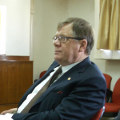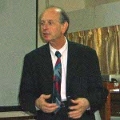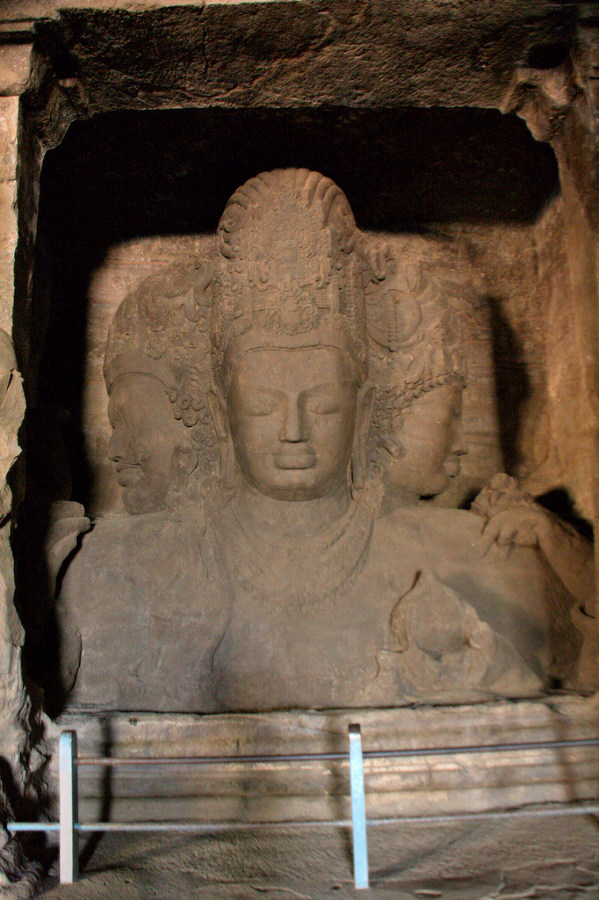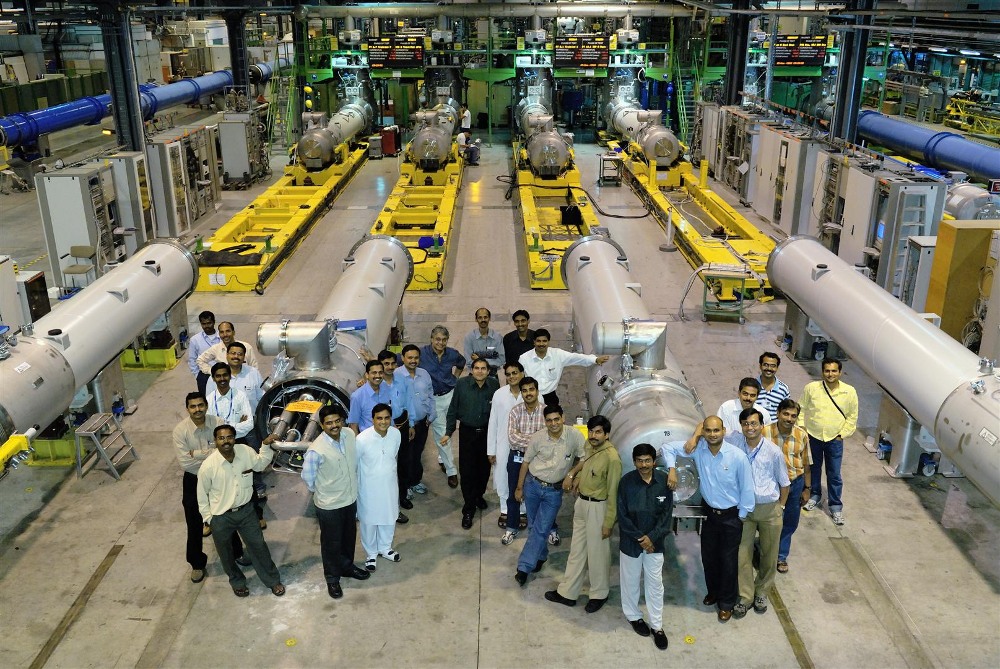Director's Corner
11 March 2010
 Barry Barish |
 Walter Davidson of NRC in Canada chaired the Mumbai FALC meeting Walter Davidson of NRC in Canada chaired the Mumbai FALC meeting |
 Michel Spiro, Chair of the CERN Council and CNRS/IN2P3 director, addressing FALC Michel Spiro, Chair of the CERN Council and CNRS/IN2P3 director, addressing FALC |
 The three faces of Shiva in the Elephanta caves. Image: Christian Haugen The three faces of Shiva in the Elephanta caves. Image: Christian Haugen |
FALC meets in Mumbai
The most recent meeting of the Funding Agencies for Large Colliders (FALC) was held at the Tata Institute for Fundamental Research (TIFR) in Mumbai, India from 17 to 18 January. FALC reviewed the major high-energy programmes worldwide during this meeting, as well as hearing reports on the status and plans for the International Linear Collider, the only project presently considered to be "global" and therefore under the special purview of FALC. Highlights from the meeting also included a report from our host Atul Gurtu of TIFR on "Current HEP Activities in India."
 Atul Gurtu, TIFR, host of the FALC meeting Atul Gurtu, TIFR, host of the FALC meeting |
This was the sixteenth meeting of FALC and had representatives of funding agencies from Canada (National Research Council, NRC), CERN (Director General and President of Council), China (Ministry of Science and Technology), France (National Institute of Nuclear and Particle Physics of CNRS), India (TIFR), Italy (Instituto Nazionale di Fisica Nucleare ), Japan (Ministry of Education, Culture, Sports, Science and Technology), and US (Department of Energy), as well as myself as Director of the Global Design Effort, and the Chairs of the International Committee for Future Accelerators (ICFA) and the ILC Steering Committee (ILCSC). Walter Davidson (NRC, Canada) chaired the meeting.
FALC discussed and reaffirmed its role as a venue for funding agencies to communicate with one another information about their respective programmes, plans, and issues related to future large projects. This serves as a precursor to proposals for possible future multilateral projects, and in Mumbai there was considerable discussion of the definition of a global project and how this might differ from an international project. The degree of internationalism, the nature of the governance, the size of the project, and the level of formalisation of international commitments and agreements were all considered key attributes of global projects. At the present time, the ILC is considered the only global project and therefore FALC gives special attention to monitoring the progress and problems for the ILC. In that regard, I gave a status report on the ILC design and R&D and Brian Foster presented the preliminary findings of the governance studies we have undertaken. Status reports were also given on the work of ICFA, the ILCSC, LHC and the possible future Super-LHC at CERN, the Tevatron at Fermilab, J-PARC jointly operated with Japan Atomic Energy Agency (JAEA) and KEK, and SuperB at INFN.
A very important presentation was given by Michel Spiro on the study being carried out by the CERN Working Group on "Geographical and Scientific Enlargement of CERN" towards a global broadening of CERN for membership, and for example, a new definition of Associate Membership that is under consideration. Discussions with non-member states are in progress. The Working Group has also been reflecting on governance structures for future global projects and how Europe, through CERN, could take part in global accelerator projects in other regions. Once the Working Group has completed its work on scientific enlargement in March 2010, CERN Council will launch a longer-term study in the framework of the European Strategy update.
In addition to the normal FALC business, there was a report by Atul Gurtu on "Current HEP activities in India." India has developed impressively broad programmes in particle physics, pretty much mirroring the frontier activities worldwide. These activities include a strong accelerator-based programme including significant participation in LHC, as well as the development of future accelerators. India is a collaborator on many leading experiments, including D0 (Fermilab), Belle (KEK), CMS and ALICE (both at the LHC at CERN). In addition India has an ambitious proposal for an India-based Neutrino Observatory and participates in astroparticle physics experiments on gamma rays and extensive air showers.
As a final note, several of us took advantage of being in Mumbai to take a nice boat trip to Elephanta, an island about an hour off the Mumbai coast. Elephanta is especially well known for its temple caves containing large carved figures on the walls that date back to about the 6th century AD. The highlight is Trimurti, or the eternal Shiva, a carved relief of the three faces of Shiva. The image is about six metres high and depicts a three-headed Shiva said to represent three essential aspects of Shiva – creation, protection and destruction. Of course, such a universal symbolic representation is relevant to large science projects like the ILC, as well as our own life cycles.
-- Barry Barish
